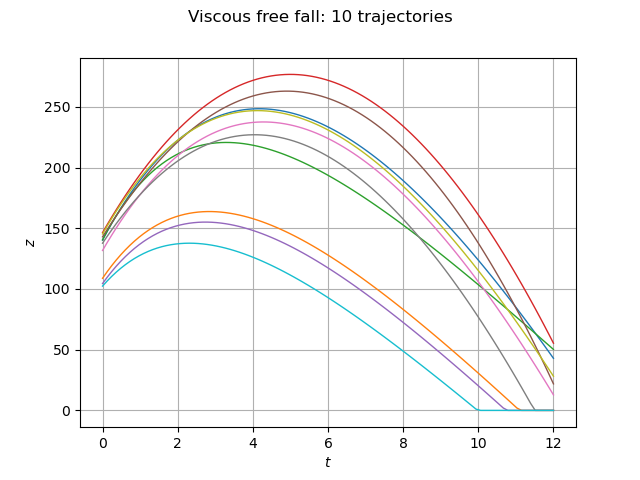Note
Go to the end to download the full example code.
Define a function with a field output: the viscous free fall example¶
In this example, we define a function which has a vector input and a field output.
This is why we use the PythonPointToFieldFunction class to create the associated function and propagate the uncertainties through it.
We consider a viscous free fall as explained here.
Define the model¶
import openturns as ot
import openturns.viewer as viewer
from matplotlib import pylab as plt
from openturns.usecases import viscous_free_fall
ot.Log.Show(ot.Log.NONE)
Load the viscous free fall example.
vff = viscous_free_fall.ViscousFreeFall()
distribution = vff.distribution
model = vff.model
Sample trajectories¶
In order to sample trajectories, we use the getSample method of the input distribution and apply the field function.
size = 10
inputSample = distribution.getSample(size)
outputSample = model(inputSample)
ot.ResourceMap.SetAsUnsignedInteger("Drawable-DefaultPalettePhase", size)
Draw some curves.
graph = outputSample.drawMarginal(0)
graph.setTitle("Viscous free fall: %d trajectories" % (size))
graph.setXTitle(r"$t$")
graph.setYTitle(r"$z$")
view = viewer.View(graph)
plt.show()

We see that the object first moves up and then falls down.
Not all objects, however, achieve the same maximum altitude.
We see that some trajectories reach a higher maximum altitude than others.
Moreover, at the final time , one trajectory hits the ground:
for this trajectory.
Reset default settings
ot.ResourceMap.Reload()
 OpenTURNS
OpenTURNS